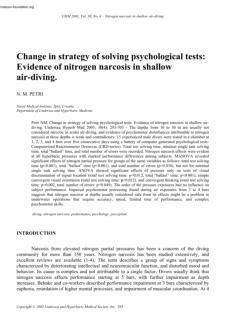Scientific papers 2003









Document written by Thomas, F. Floyd, James M. Clark,
Robert Gelfand, John A. Detre, Sarah Ratcliffe, Dimitri
Guvakov, Christian J. Lambertsen, and Roderic G.
Eckenhoff
Breathing 100% O2 at 1-atmosphere absolute (ATA) is
known to be associated with a decrease in cerebral blood
fow (CBF). It is also accompanied by a fall in arterial PCO2
leading to uncertainty as to whether the cerebral
vasoconstriction is totally or only in part caused by arterial
hypocapnia.
The team tested the hypothesis that the increase in arterial
PO2 while O2 was breathed at 1.0 ATA decreases the
cerebral blood fow (CBF) independently of a concurrent
fall in arterial PCO2 ..


Authors:
A. O Brubakk, A. J. Arntzen, B. R. Wienke,
S. Koten:
This study examined how different decompression profiles
affect bubble formation after surface decompression using
oxygen. Three profiles were tested on a pig after an air
dive: a USN staged profile, a linear continuous profile
matching the USN time, and a faster linear profile. The
study found that the faster linear profile resulted in fewer
bubbles in the pulmonary artery and jugular vein, aligning
with model simulations.

This report describes a case-control study of UK
compressed air workers in which subjects with repetitive
DCS during a single compressed air project were matched
to two control groups. Further to this, an analysis of the
Health and Safety Executive (HSE) Decompression
Database 1986-2000 was undertaken to examine the
relative contribution of those workers with repetitive DCS
to the overall number of DCS episodes in the UK during
the study period.

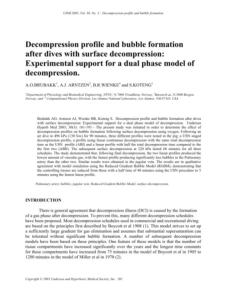

Authors: Kun-Lun Huan, Chin-Pyng Wu, Yin-Li Chen, Bor-
Hwang Kang, & Yu-Chong Lin
Diving acclimatization refers to reduced susceptibility to
acute decompression sickness (DCS) in individuals
undergoing repeated compression-decompression cycles.
The authors postulated that mechanisms responsible for
acclimatization are similar to that of stress preconditioning.
In this study, we investigated the protective effect of prior
heat shock treatment on air embolism-induced lung injury
and DCS incidence in rats.
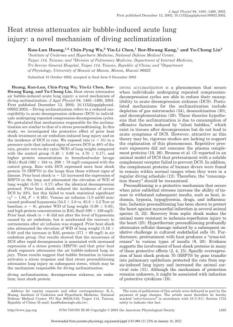

Authors: M. B. Harris, M. A. Blackstone, Hong Ju, V. J.
Venema, & R. C. Venema.
Endothelial nitric oxide (NO) synthase (eNOS) is the
primary source of NO production in the cardiovascular
system. It is a key regulator of systemic blood pressure,
blood vessel proliferation, and vascular lesion formation.
eNOS is regulated by numerous mechanisms, including
subcellular location, phosphorylation, and protein-protein
interactions. This study is the continuation of previous
experiences regarding this point. Understanding the
phenomenons described is essential to understand divers'
physical condition and some phenomena linked to
decompression accidents.
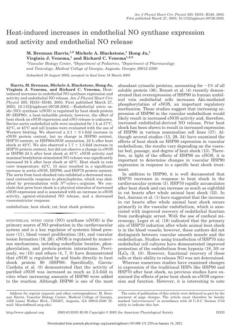

Authors: Jay B. Dean, Daniel K. Mulkey, Alfredo J. Garcia,
Robert W. Putnam, and Richard A. Henderson
As ambient pressure increases, hydrostatic compression of
the central nervous system, combined with increasing
levels of inspired PO2, PCO2, and N2 partial pressure, has
deleterious effects on neuronal function, resulting in O2
toxicity, CO2 toxicity, N2 narcosis, and high-pressure
nervous syndrome. The cellular mechanisms responsible
for each disorder have been difficult to study by using
classic in vitro electrophysiological methods, due to the
physical barrier imposed by the sealed pressure chamber
and mechanical disturbances during tissue compression.


Authors: RJD Harris, D.J Doolette, D.C Wilkinson, D.J.
Williams
Many divers report less fatigue following diving, breathing
oxygen-rich N2 - O2 mixtures than breathing air. In this
double-blinded, randomized controlled study, 11 divers
breathed either air or enriched Air Nitrox 36% O2 during
an 18 msw chamber dive for a bottom time of 40
minutes. Two periods of exercise were performed during
the dive. Divers were assessed before and after each dive.

Authors:
Fumio Yamazaki, Futoshi Wada, Ken Nagaya, Riko Torii,
Yutaka Endo, Sueko Sagawa, HitoshiYamagushi,
Motohiko Mohri, Yu-chong Lin, & Keizo Shiraki.
This experiment examined the involvement of the
autonomic nervous systems and intrinsic components in
the occurrence of hyperbaric bradycardia. Eight male
divers were exposed to an N2 - O2 (Nitrox) environment
at 3 atmospheres (ATA). The heart rate (HR), plasma
norepinephrine (NE), and spectral power of the variability
of the cardiac interval were measured during a 4-day pre-
dive control period, a seven-day saturation period at 3
ATA, and a 4-day post-dive period.


Published by: Unimed Scientific Limited for the UK HSE
This study was commissioned to compare a number of
tables used for oxygen decompression in compressed air
tunneling work. It was undertaken by Unimed Scientific
Limited at the request of UK Health and Safety Executive.
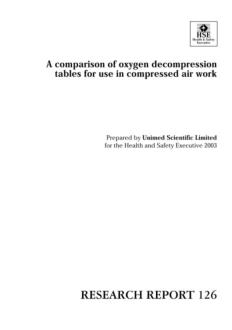

Authors: Mirit Eynan, Yehuda Arieli, Ran Arieli, & Arieth
Bomzon
The purpose of this study was to measure the effect of 24
h breathing 100% O2 in normobaric conditions on
energetic efficiency in the trained rat. The results suggested
that prolonged exposure to hyperoxia induces a reduction
in the energetic efficiency of trained rats.
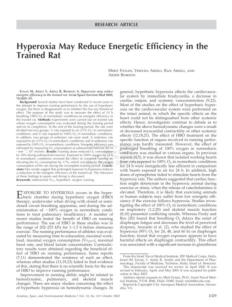


Author: Valerie Flook
The work described in this report continues the one
published by Unimed Scientific Ltd in December 2002 for
“Well Ops UK Ltd”. In this report, Valerie Flook describes
changes to procedures for upward excursions, that were
not discussed in the previous document.
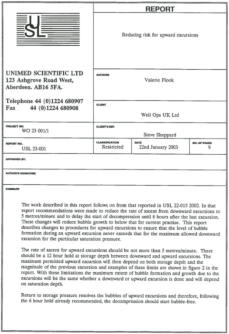
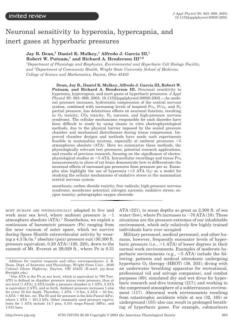

Authors: David J Doolette and Simon J Mitchell)
Isolated inner ear decompression sickness (DCS) is
recognised in deep diving involving breathing of helium-
oxygen mixtures, particularly where breathing gas is
switched to a nitrogen-rich mixture during
decompression. The biophysical basis for this selective
vulnerability of the inner ear to DCS has not been
established. A compartmental model of inert gas kinetics
in the human inner ear was constructed from anatomical
and physiological parameters described in the literature
and used to simulate inert gas tensions in the inner ear
during deep dives and breathing gas substitutions that
have been reported to cause inner ear DCS.
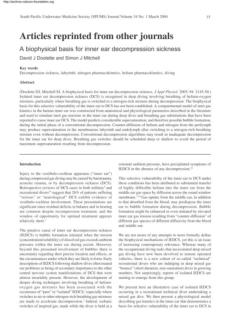

Click on the octopus
to return to the top
of the page

Authors: Dejan Andric, Nadan M. Petri, Hrvoje Stipancevic,
Lena Vranjkovic Petri, Hasan Kovacevic
Between 1991 and 2002, Croatia experienced a
significant change in the incidence of type 1 and type 2
decompression sickness (DCS) among divers. This shift has
been attributed to the widespread use of diving
computers and advanced gas mixtures, which allow for
longer and deeper dives, thereby increasing the likelihood
of decompression-related issues. The results of this study
are particularly significant because type 2 decompression
sickness can cause permanent neurological damage.
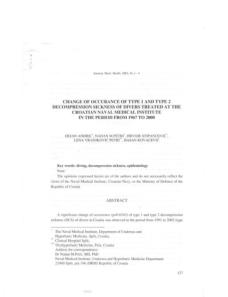

This workshop was held at Duke University on January 23
and 24, 2002, with a focus on decompression illness in
humans and animal models, as well as adjunctive
therapies and research opportunities.
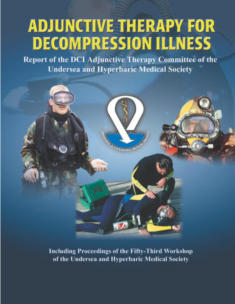

Authors: Nadan petri & Dejan Andrie
This document discusses the increasing challenge of
diagnosing decompression sickness (DCS) in Croatia due
to the rising number of divers. Many physicians at remote
diving sites have only basic knowledge of diving medicine
and lack experience. Language barriers also hinder the
medical history and examination of foreign divers.
Consultations at the Naval Medical Institute (NMI) in Spli
significantly aided in accurate diagnosis and treatment.
The text includes six case studies from NMI Archives
illustrating how biases, panic, and inexperience can
complicate DCS diagnosis.
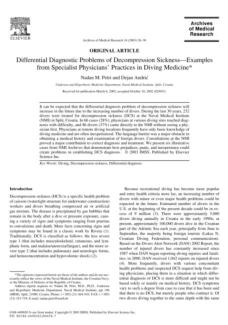

Authors: S. Skogland, L.E.B. Stuhr, H. Sundland, S. Marstein,
A. Hope
This study aimed to test whether increasing oxygen partial
pressure shortly before and during decompression from
hyperbaric pressures would reduce venous gas bubble
formation in rats. Results showed significantly fewer
bubbles in exposure with increased O2 partial pressure,
suggesting that increasing oxygen partial pressure before
and during decompression may lead to safer
decompression in conscious rats.
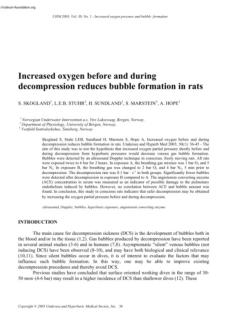

Authors: M. El-Zein, J-L. Malo, C. Infante-Rivard, D. Gautrin
This study aimed to determine the incidence of probable
occupational asthma (OA), bronchial obstruction, and
hyperresponsiveness among 286 students entering a
welding apprenticeship program. Out of 194 subjects
with complete data, the incidence of probable OA was
3%, and bronchial hyperresponsiveness was 11.9%. There
was a significant decline in lung function, with an average
8.4% drop in forced expiratory volume percent predicted.
The study suggests early pulmonary function changes
due to welding exposure, but the long-term chronic
effects need further exploration.
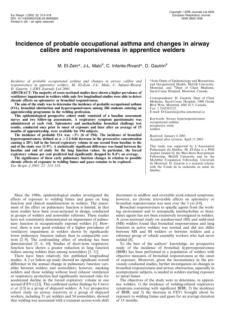

Author: Michael G Costigan
Hydrogen sulphide (H2S) is a toxic gas that smells like
rotten eggs and poses a significant risk in various
industries, especially in confined spaces such as manholes
and sewers. High concentrations (>1000 ppm) can
quickly cause unconsciousness and death. There are
numerous reports of fatalities due to H2S exposure. Even
low concentrations (<10 ppm) can affect health by
interfering with cellular respiration. The UK updated
occupational exposure limits for H2S to reduce these
health risks.
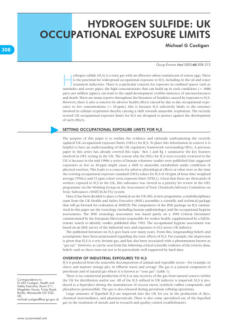

Authors:
hmet Korkmaz, sükrü Öter, Salih Deveci, Taner Özgürtas,
Turgut Topal, Serdar Sadır, and Hayati Bilgiç
This study investigated the role of nitric oxide and
hyperbaric oxygenation in developing and treating
cyclophosphamide-induced hemorrhagic cystitis in rats.
The study concluded that inducible nitric oxide synthase
plays a crucial role in the pathogenesis of
cyclophosphamide-induced cystitis, and hyperbaric
oxygen aids in bladder repair rather than protection.
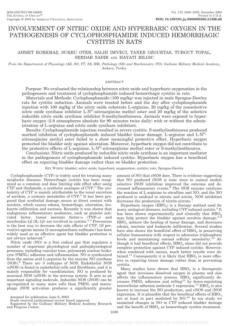

Authors: Emmanuel Cantais, Pierre Louge, Alain Suppini,
Philip P. Foster, Bruno Palmier
This medical study investigated the role of right-to-left
shunt in divers with decompression illness using
transcranial Doppler ultrasonography to determine the
association between right-to-left shunt and various types
of decompression illness, such as cochleovestibular and
cerebral decompression illness, and to suggest
paradoxical embolism as a potential mechanism for these
conditions. It provides detailed statistical analysis and
conclusions drawn from the study, indicating that a
significant right-to-left shunt is associated with an
increased incidence of certain types of deco illness.



12 - SARMAC V 2003 abstracts - Discussants: The effects of nitrogen
narcosis on metacognition in divers
- Published by SARMAC

Authors: Conference: Society for Applied Research in
Memory and CognitionAt: Aberdeen,
ScotlandAffiliation: University of Plymouth
This symposium includes reports on recent research on
various topics related to cognition in emotionally
disordered states, including the interpretation of facial
expressions, the interpretation and recall of verbal
material, autobiographical memory, and the generation
of mental models.




19 - Change in strategy of solving psychological tests: Evidence of
nitrogen narcosis in shallow air-diving.
- Published by the Undersea & Hyperbaric Medical Society (Author-released).
Authors: N.M. Petri
Research on nitrogen narcosis effects indicates that
psychomotor disturbances can occur at depths not
typically regarded as hazardous. Testing involved
experienced divers exposed to varying hyperbaric
pressures showed significant performance decrements in
various tasks. The findings imply potential risks for
underwater operations requiring precision, highlighting
the need to reassess safety standards related to nitrogen
narcosis.
